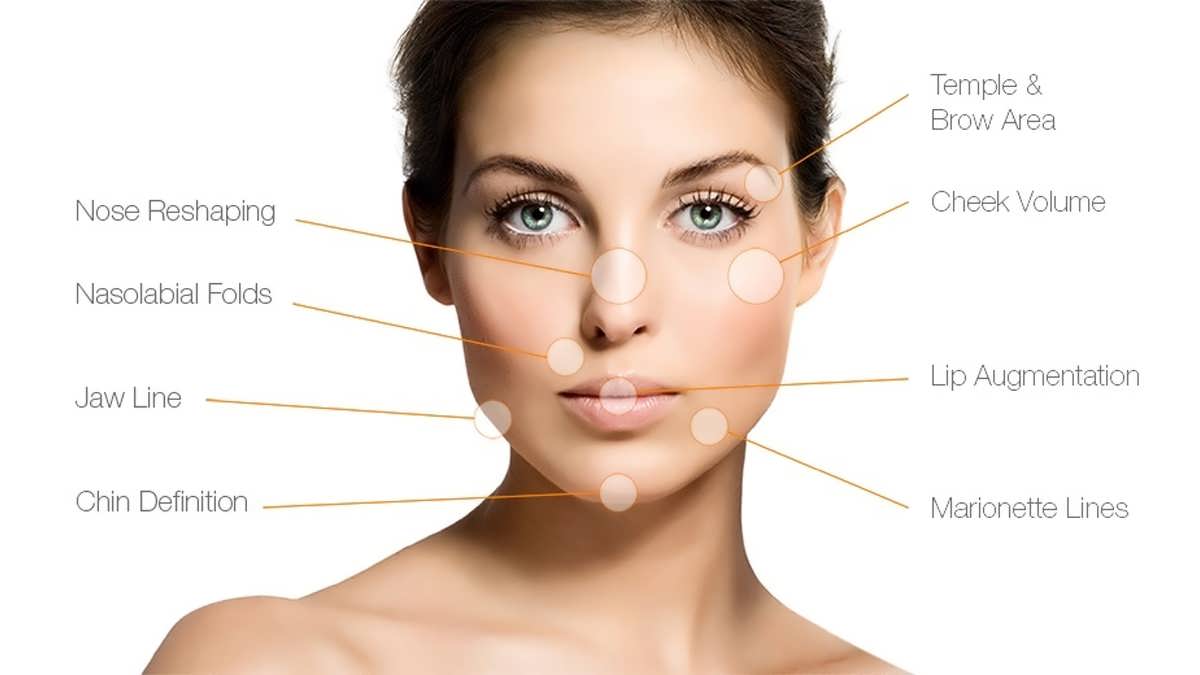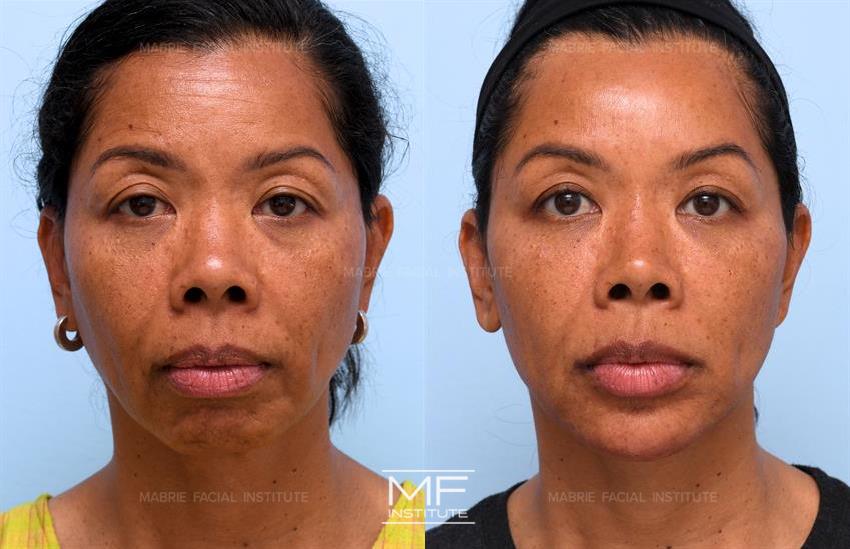Welcome to our expert guide on dermal fillers. As experienced beauty professionals, we’ve witnessed the transformative power of these amazing cosmetic treatments, and we’re excited to share our knowledge with you. Dermal fillers are injectable substances that work wonders in restoring volume and fullness to your face. They smooth out wrinkles, enhance facial contours, and rejuvenate your appearance. The most commonly used fillers include hyaluronic acid (HA), poly-L-lactic acid (PLLA), calcium hydroxylapatite (CaHA), and lactic acid-based options. Let’s dive deeper into the topic in our next section!
Click here to discover how to get rid of jowls with dermal fillers!
Contents
Different Types of Dermal Fillers: A Comprehensive Guide
In this section, we will provide an in-depth description of each type of dermal filler and compare their uses and results.
1. Hyaluronic Acid (HA) Fillers:
When it comes to popularity, hyaluronic acid fillers reign supreme. Derived from a substance naturally found in our bodies, these injectable wonders are both safe and effective for facial rejuvenation. HA fillers not only add volume to areas like lips, cheeks, and nasolabial folds but also hydrate the skin for a more youthful appearance. Leading brands such as Juvederm and Restylane offer exceptional results.
Hyaluronic acid fillers typically last between 6-18 months.
2. Calcium Hydroxylapatite (CaHA) Fillers:
If you’re seeking immediate results coupled with long-term benefits, calcium hydroxylapatite fillers are your go-to choice. By stimulating collagen production within the skin, this type of filler effectively treats deeper wrinkles or restores lost volume in areas like the cheeks or hands. Radiesse is a renowned brand that harnesses the power of calcium hydroxylapatite.
Calcium hydroxylapatite fillers can provide results for up to a year or more.
3. Poly-L-lactic Acid (PLLA) Fillers:
For those desiring gradual improvement in facial contours and overall skin texture over time, poly-L-lactic acid fillers are ideal candidates. Unlike other types of fillers that deliver instant outcomes, PLLA stimulates collagen production gradually for natural-looking results that last longer. Sculptra is one such example that effectively addresses deep lines, wrinkles, and hollowed areas on your face.
PLLA fillers may require multiple sessions but offer results that can last up to two years.

To ensure you make the best choice for your unique needs, it is essential to consult with a qualified professional who can assess your individual goals and requirements.
Expert Tips for Choosing the Perfect Dermal Filler
Choosing the perfect dermal filler is a big decision. Here’s what you need to know:
- Allergies and Sensitivities: Don’t forget to tell your healthcare provider about any allergies or sensitivities you have. Some fillers could cause an allergic reaction.
- Budgetary Factors: Consider your budget when selecting a filler. The cost can vary based on brand, quantity, and location of the procedure.
- Safety: Every filler has its own safety profile and potential side effects. Do thorough research and talk to your healthcare provider to minimize risks.
- Personal Preference: Your choice should align with your preferences. Reputation, previous experiences, longevity, or ease of maintenance may be important factors for you.
- Professional Guidance: Consult a qualified medical professional who specializes in cosmetic procedures before making any decisions. They can assess your unique facial structure and recommend the best filler for optimal results.
What To Expect During and After Your Procedure
Discover the secrets of dermal fillers with our expert guidance. From the procedure itself to your recovery and aftercare, we’ve got you covered every step of the way.
- Before embarking on your cosmetic journey, it’s crucial to consult with a qualified professional. They will assess your unique needs and goals during the initial appointment.
- On treatment day, arrive at the clinic fresh-faced for maximum comfort. Your provider may apply numbing cream or ice packs to ensure a painless injection process.
- Using fine needles or cannulas, they will delicately inject small amounts of dermal filler into targeted areas. Most treatments take just 30 minutes to an hour.
- While some patients may feel mild discomfort during injections, it is generally well-tolerated. Many describe sensations like gentle pressure or pinching at each injection site.
- Immediately after treatment, you’ll notice a remarkable improvement in volume restoration. Temporary side effects like mild swelling, redness, or bruising at the injection sites are easily managed and subside quickly.
After the treatment, you can get back to your regular activities right away. However, avoid intense exercise, too much sun, or steam rooms for a few days.
To make sure you’re happy with the results for a long time, your provider may suggest follow-up appointments. This way, they can check how things are going and decide if you want any touch-ups.
Potential Risks and Side Effects of Dermal Fillers
While dermal fillers are generally safe in the hands of a qualified professional, there are several potential side effects.
- Allergic Reactions: Rare but possible. Tell your healthcare provider about any allergies before treatment.
- Infection: Small risk of infection at the injection site. Choose a reputable practitioner who follows strict sterilization protocols.
- Bruising and Swelling: Common but temporary. Use cold compresses and pain relievers if needed.
- Lumps or Bumps: Sometimes uneven distribution causes lumps under the skin. The provider can fix it with a massage or additional treatments.
- Migration: Fillers may move to unintended areas, causing asymmetry. Pick an experienced injector to reduce this risk.
- Clogged Blood Vessels: Rarely, fillers can block blood vessels, leading to tissue damage or vision loss. Seek immediate medical attention if this occurs.
- Necrosis: Extremely rare tissue death caused by blocked blood supply. Considered as a potential risk.
To minimize risks and side effects associated with dermal fillers, it is crucial to select a qualified and experienced healthcare provider. They possess the knowledge and skills necessary to ensure your safety throughout the procedure.
Real-Life Experiences: Testimonials and Case Studies
Considering a cosmetic procedure? Don’t just take our word for it. Hear from those who’ve experienced the treatment themselves. Real-life stories reveal the true effectiveness and satisfaction of different types of dermal fillers. Get ready to be inspired as we share testimonials and case studies from our clients, giving you an authentic preview of what awaits you.
Case Study 1: Hyaluronic Acid Fillers for Lip Enhancement
- Patient Profile: Meet Jane—a 35-year-old woman seeking fuller lips.
- Procedure Details: Jane underwent a quick outpatient procedure where she received hyaluronic acid lip fillers.
- Results: Following the treatment, Jane experienced plumper lips with an improved definition that lasted for several months.
Case Study 2: Calcium Hydroxylapatite Fillers for Cheek Augmentation
- Patient Profile: Introducing John—a 50-year-old man desiring enhanced cheekbones.
- Procedure Details: John opted for calcium hydroxylapatite filler injections in his cheeks.
- Results: After the treatment, John enjoyed lifted cheekbones with restored volume that lasted up to one year.
Case Study 3: Poly-L-Lactic Acid Fillers for Facial Rejuvenation
- Patient Profile: Meet Lisa—a 45-year-old woman concerned about sagging skin and loss of facial volume.
- Procedure Details: Lisa received poly-L-lactic acid fillers to stimulate collagen production and restore facial fullness.
- Results: Over a series of treatments, Lisa noticed gradual improvements in her skin’s texture, elasticity, and overall youthfulness.

These testimonials and case studies showcase the positive experiences individuals have had with different types of dermal fillers. It is important to remember that results may vary depending on age, skin condition, and treatment goals. To determine the best filler for your specific needs, consult with a qualified professional.
